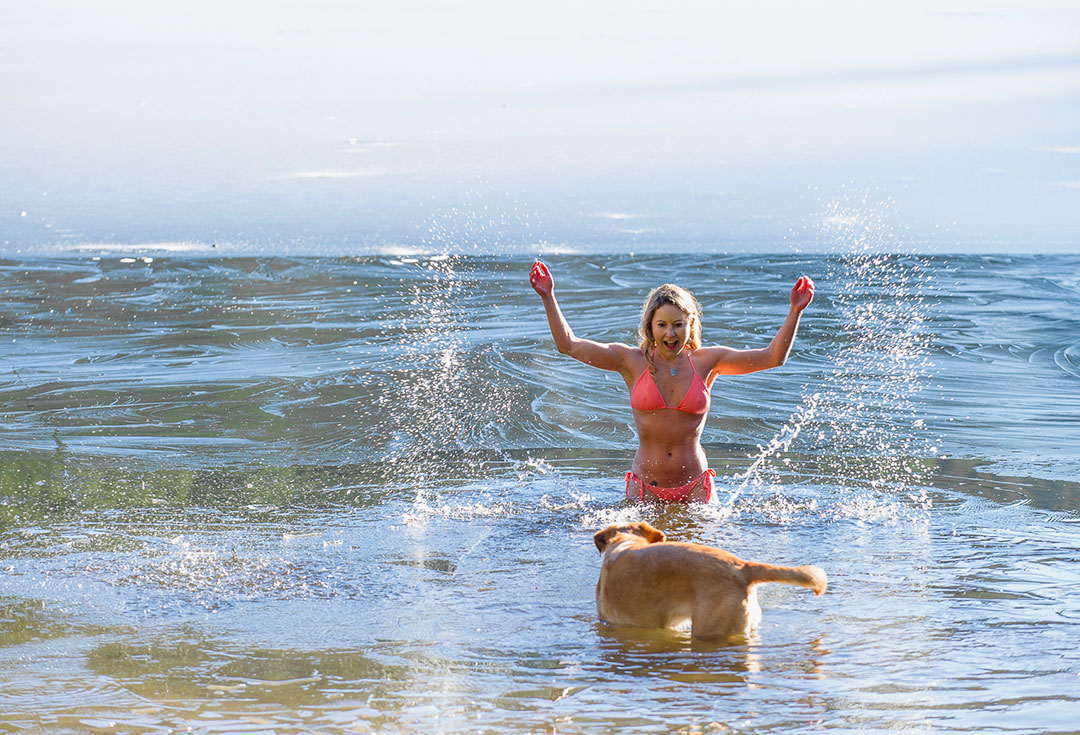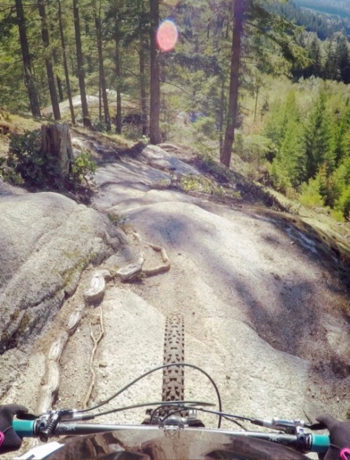What’s my safe word?
As my body slipped into the ice cold water, it was as if I was stepping into another self. The bitter cold began to bite my skin as I got deeper and deeper, until I was up to my neck. Breathe, I told myself, calmly focusing my mind. My muscles contract and shivers run up my spine, as the cold switches to a pins and needles burning sensation; my nerves becoming confused. The temptation to tapout is calling my name.
Swimming in the middle of winter might sound like a twisted mountain town hazing, but learning to welcome inevitable pain isn’t masochistic, it’s about training your ability to endure, grow and uncover a deeper sense of self. Whether you call it guts, grit or balls. This mental toughness can be defined as the ability to maintain focus and determination despite difficulty or consequences.
Submerged in pain, whether it’s physical or emotional, we often wonder if we’ll ever feel good again; if we’ll find solid ground beneath our feet. The answer lies in the pain itself. The biggest difficulty in working with pain is not the pain, it’s our response to it. Pain can be our greatest possible invitation to transform—but only if you accept that invitation.
Drowning the truth
Somewhere along the way, many of us learned to run from pain and repress emotions. The thing is, no matter how far pain descends into our phyche, it’s still there. Floating around, swimming to the surface every now and then when someone or something activates a memory. This repression often results in mood swings, unexplained sadness, mild depression, and can also leak out in the form of recurring dreams.
Buddhist teachings tell us that human suffering is caused by an aversion and resistance to what is happening. Most of the pain in life is caused by our distance from the truth. So, the best reaction to pain is actually to dive straight in. If we don’t let ourselves experience pain, we can’t learn that we’re capable of coping. Pain helps us discover the strength within us, and results in an increased belief in self.
Plunging into the pain
When the universe dishes you up a plateful of pain, it’s important to realize that it’s part of having a human experience. You’re meant to work through it. What you’re not meant to do is to suppress and anesthetize it with antidepressants or other numbing devices.
Given that life includes a great deal of disappointment, pain and failure, it’s beneficial to develop a good pain tolerance. To do this, you need to get in touch with your emotions, and be willing to feel them. You need to understand why you hurt and dive deep into where the pain is surfacing from.
Training for pain
A great example of pain training is winter swimming (or cold showers!). The psychological benefit comes from facing and conquering fear, and remaining calm through chaos. Whether it’s winter swimming, endurance bike riding, marathon running, attending a sweat lodge, risking rejection or simply showing up when shit gets tough, there are two key elements you will practice. Part one is the practice of breathing, which is critical for handling any type of stress. Part two is conditioning yourself psychologically to do something painful and panic-inducing—mind over matter.
An essential ingredient to enduring pain is how we relate to our experience; it should be one of gentleness and compassion. Self-compassion is not self-indulgence, it’s actually the antidote to pain. Our society encourages us to tough things out, but the truth is, the strongest people learn how to wade through discomfort with full presence and draw essential lessons from it.
Pain is never going to stop showing up, so we need to learn how to handle it. Mindfully training pain tolerance encourages you to keep getting back up after every fall, to the point that it becomes habit.
“If you are going through hell, keep going.” —Winston Churchill

Invite the pain
Pain is a seed that gives life to your unique story, inviting you to grow. Life’s challenges are not supposed to paralyze you; they’re supposed to help you discover who you are. Letting pain break us wide open taps into your inner zest—the inherent essence of our being—the soul. There is beauty and bravery in pain, because it draws out the true thoughts, attitudes, assumptions, and desires of your heart.
How to maneuver through your pain
Pain releases stress hormones which increase breathing, heart rate, and anxiety. These techniques, designed by neuroscientists will help your body and brain work in sync to create focus and strength:
- Take your challenge one step at a time.
- Visualize success.
- Breathe.
- Re-frame negative views.
- Celebrate small victories.
- Find your tribe of supporters.
- Have self-compassion
Self-compassion
If you’re in pain, don’t beat yourself up. It’s okay to feel. Be kind to yourself. It’s common to feel alone in your experience, as if others could never relate to what you’re going through. The truth is that your challenges are part of a shared human experience, and we all have our own flavour of pain in our lives.
Practicing self-compassion enhances the connection with yourself, and everyone around you. Self-compassion allows you to embrace life with an open heart, and builds a tolerance that allows you to fully enjoy life and better manage adversity.
Physical benefits of cold water hydrotherapy
Cold therapy, like ice plunges, ice baths, cryotherapy and cold showers have an abundance of benefits, from reducing inflammation to healing to muscles and joints.
Helps alleviate depression
Plunging into cold activates the sympathetic nervous system, sending blood to the brain and core, and reducing systemic inflammation, which is strongly linked to depression.
Assists with muscle repair
Cold therapy constricts blood vessels and decreases metabolic activity, which reduces swelling and tissue breakdown. Once you return to warmth, your tissues warm up, causing a rush of blood flow to organs and tissue.
Improves brain function
Cold therapy regenerates synapses and nerve cells, boosting cognitive function.
Reduces stress
A blast of cold floods you with feel good hormones like dopamine and norepinephrine, while uric acid drops and glutathione increases, reducing your stress level.
Boosts immunity
When you submerge yourself in cold water you produce immunity-boosting lymphocytes.





No Comments